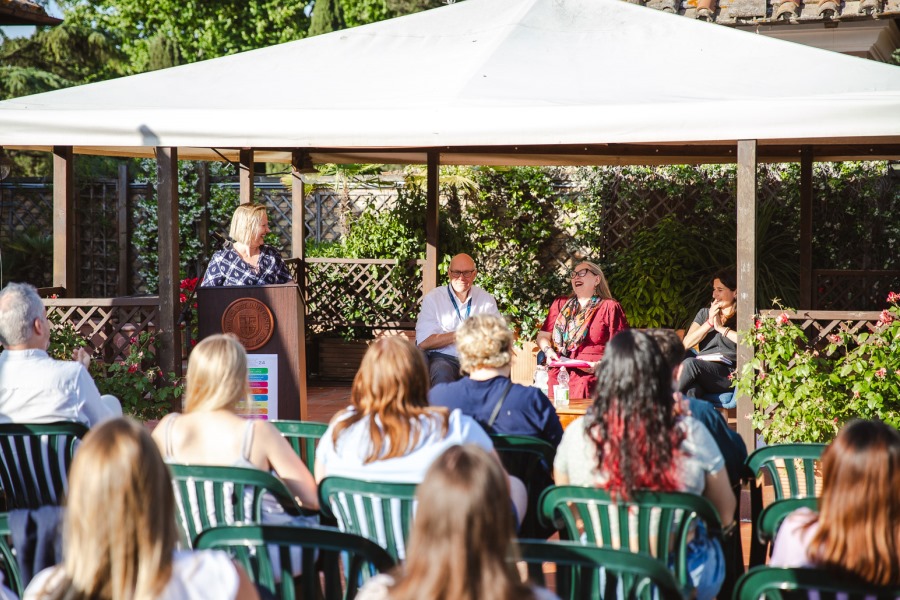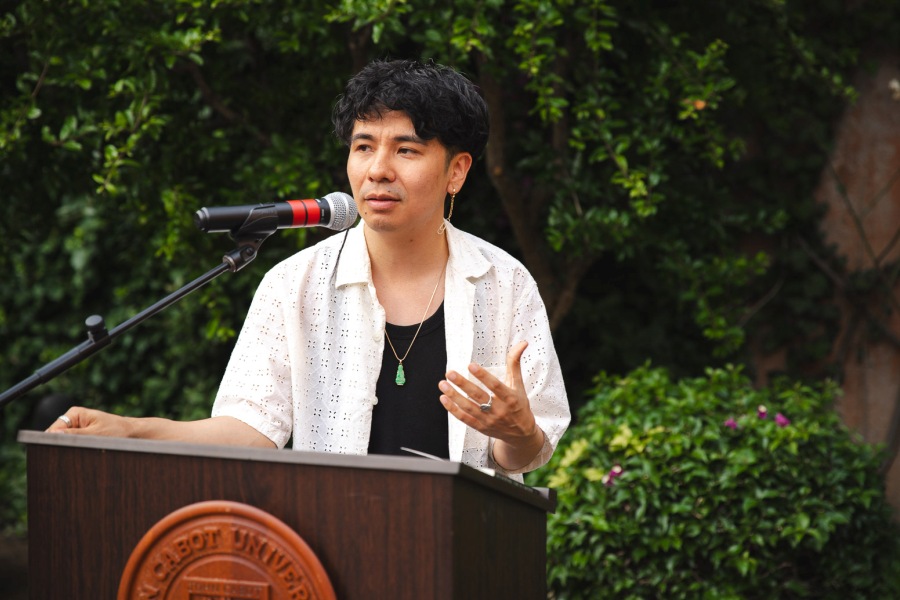JCU’s Continuing Education Program Welcomes Art Historian Claudio Strinati
On April 29, 2017, John Cabot University had the honor of hosting one of Italy’s most influential contemporary art historians, Dr. Claudio Strinati. Strinati’s lecture was part of the Continuing Education program “Management and Digitalization of Cultural Heritage.”
Strinati talked about the Renaissance painter Raphael (Urbino, 1483 – Rome, 1520), depicting the Renaissance as a period of geographical discoveries and explorations, which sparked a new interest in exploring the historical past of Italy. Modern archeology was born in this period. Excavations in Rome brought to light some of the ancient works of art that we still admire today, such as Laocoön, Venus de Milo, and the Apollo Belvedere. The term “Renaissance” indicates the rebirth of classical culture, which Italian artists, such as Raphael, celebrated in their masterpieces.
Raphael started his career making portraits for the aristocrats living in his area. Portrait painting enjoyed a resurgence in the Renaissance and was inspired by the Classical period’s attention to the relevance of individuals’ social identities. Individual portraits, mainly busts and sculptures, were widely used in the Classical Age to represent emperors, politicians, and philosophers. Each of these subjects was depicted differently depending on their social position.
Raphael was a master of portraits. Between the XIX and XX century, art historians attributed an impressive number of portraits to him. However, it is very unlikely that Raphael actually painted all of them. Strinati showed the students a series of portraits, which could have been erroneously attributed to Raphael, and tried to stimulate students’ observation skills, which are paramount for art historians.
Strinati’s lecture outlined some of the main difficulties encountered by art historians. Their work can sometimes be extremely challenging, especially when dealing with Raphael or other famous artists, who had many disciples working for them and studying at their schools. In such cases, it can be very difficult to discern the works of the master painters from the ones of the disciples, something that only a trained eye and experienced professional can do successfully.
Professor Antonella Salvatore, Director of John Cabot University’s Center for Continuing Education, thanked Giulia Silvia Ghia, President of Verderame Progetto Cultura (JCU’s partner for the Continuing Education program “Management and Digitalization of Cultural Heritage”), for facilitating the lecture.






